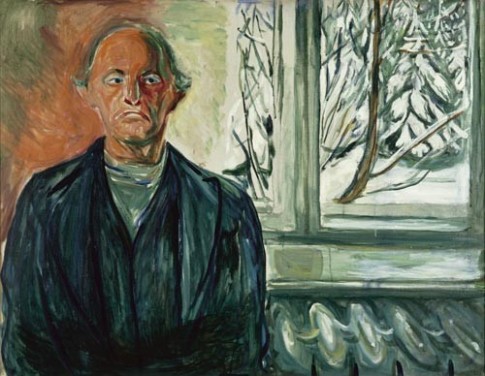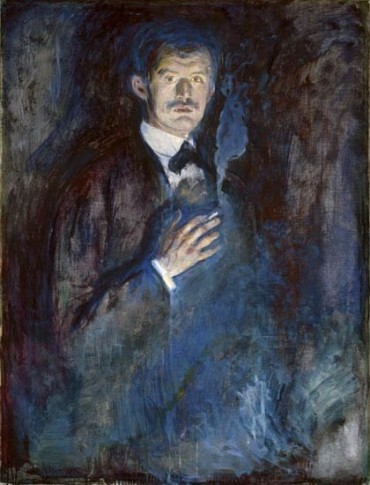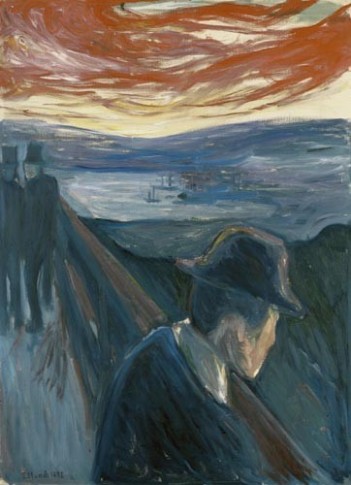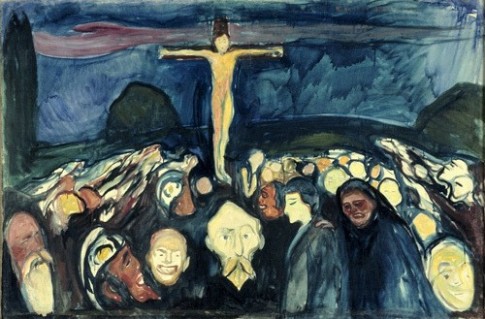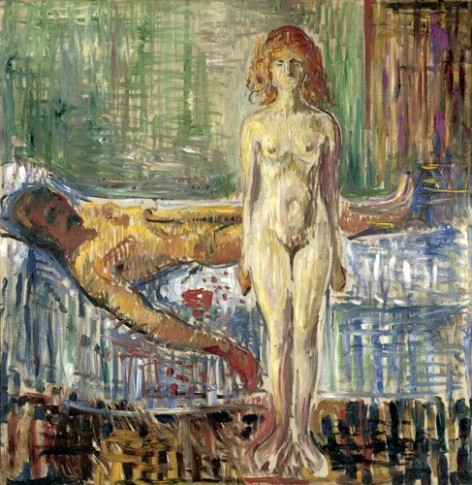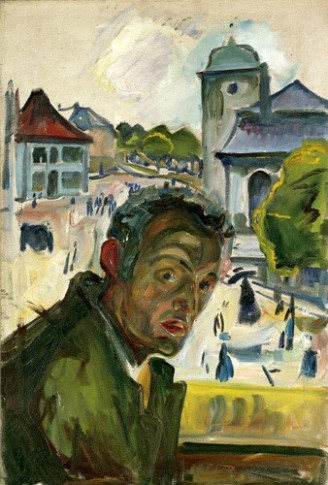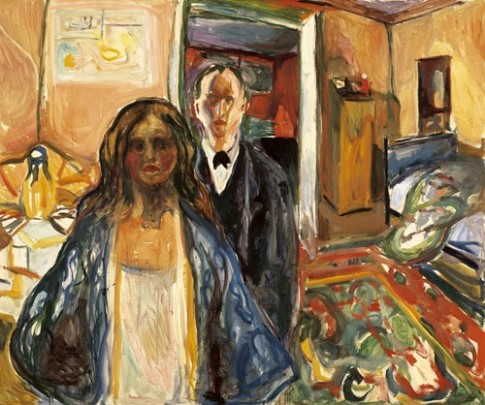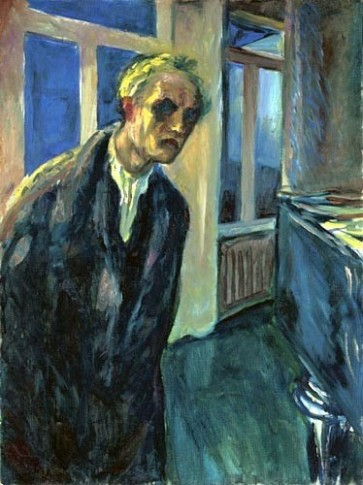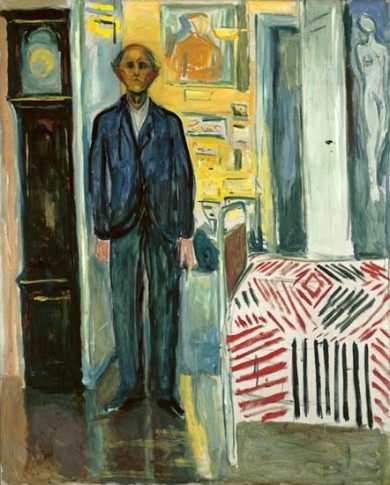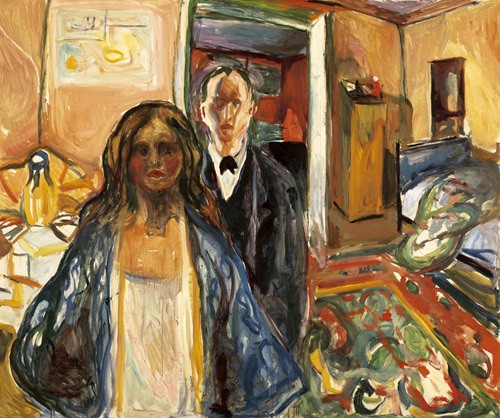
Edvard Munch, The artist and his Model. Jelousy Motif, 1920-21 © Munch-museet/Munch-Ellingsen Gruppen/BUS 2005. Belongs to Munch-museet, Oslo
Lively Painting
In Self-portrait in Inner Turmoil (1920), we are again confronted with a restless Munch. His body nearly fills the entire pictorial surface and the composition evokes Henrik Ibsen’s John Gabriel Borkman – another restless spirit that Munch identified with in a number of sketches.
Between 1919 and 1921, Edvard Munch worked on the series The Artist and his Model. In art history this is typically a motif with an erotic undertone, but what interests Munch is primarily the relationship between man and woman in general. Munch’s accomplice is his model, Annie Fjeldbu, and the place for their meetings is the bedroom at his home, Ekely. Rather than conveying an erotic atmosphere, Munch examines the distance between the characters. The longing of man and woman for each other remains a utopia. Nevertheless, this series is characterised by a lively style of painting that sets them apart from his previous portrayals of the relationship between the sexes.

